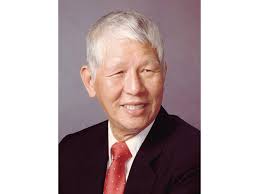Entrepreneurship Exam
1/129
There's no tags or description
Looks like no tags are added yet.
Name | Mastery | Learn | Test | Matching | Spaced |
|---|
No study sessions yet.
130 Terms
Entrepreneurship
is the process of creating something new of
value by devoting (giving) the necessary time
and effort. Robert D. Hisrich, M. Peters & D.A Shepherd
by accepting and acknowledging the
necessary financial, psychological, and social
risks, and
finally receiving the resulting rewards be it monetary and personal satisfaction and freedom to do what you want.
Entrepreneur
an individual who actively forms or leads their own business and nurtures them for growth and
prosperity. UiTM Entrepreneurship Study Group
a person who creates and manages change by the recognition of opportunities (needs, wants, opportunities, problems, and challenges) and develops people and manages resources to take
advantage of the opportunity and creates a venture (profitable business). Eston Kimani, MIT
Innovation or newness
Organization of resources
Creation of new product or service
Generation of wealth
Taking risk in a business venture
Preparation to face uncertainty
Creating job opportunity
What are the possible outcomes of engaging in Entrepreneurship?
Curiosity
Willingness to Experiment
Adaptability
Decisiveness
Self-Awareness
Risk Tolerance
Comfort with Failure
Persistence
Innovative Thinking
Long-Term Focus
Give the 10 Characteristics of Successful Entrepreneurs
Exposing the local market to a wide range
of foreign opportunities
Leader of the Whole Industry
Community Development
Diminishing Social Tension and Differences Amongst Youth
Balanced Rapid Economic Growth
Removal of Regional Disparities
Economic independence
Capital formation
Standard of Living
Backward and forward links
What are the roles of entrepreneurship in Economic Growth?
Entrepreneurial Process
The process of pursuing (going after) a new
venture or business,
Whether it is a new product going into an existing market OR
Existing product going into new markets OR
The creation of a new organization.
requires the commitment of the necessary time and effort.
Appreciate and understand the importance of time and effort devoted to creating something new and making it workable
Involves the enjoyment of the rewards (Freedom, monetary) after the effort, followed by personal satisfaction
Creation Process
Entrepreneurial Process
creating something new of value
Identification and evaluation of the opportunity
Development of a business plan
Determination of the required resources
Management of the resulting enterprise
Give the Steps in an Entrepreneurial Process
opportunity to create your destiny
opportunity to make a difference
opportunity to reach your full potential
opportunity to reap extraordinary profits
societal responsibility and recognition
opportunity to engage in work of their choice
What are the Benefits of Entrepreneurship?
uncertainty of income
risk of losing one's entire investment
long hours and hard work
lower quality of life until the business gets established
high level of stress
complete responsibility
discouragement
What are the Drawbacks of Entrepreneurship?
Management Mistakes
Lack of Experience
Poor financial control
Weak marketing efforts
Failure to develop a strategic and effective plan
Uncontrolled Growth
Poor location
Improper inventory control
Incorrect or unsuitable pricing
The inability to move into entrepreneurial thinking mindset from the previously secured permanent managerial position held
Give the 10 DEADLY MISTAKES of Entrepreneurship
Know your business in depth.
Develop a good, effective, and solid Business Plan.
Manage your financial resources effectively.
Have a thorough and complete financial statement.
Learn to hire and manage people effectively.
Keep physically fit, consume healthy foods, and avoid the addictive consumption of cigarettes and alcohol.
How can you avoid failure in an entrepreneurial business?
Henry Sy Sr.
SM(Shoe Mart)
What is the name of this Entrepreneur and what company did he start?

Mariano Que
Mercury Drug
What is the name of this Entrepreneur and what company did he start?

Tony Tan Caktiong
Jollibee
What is the name of this Entrepreneur and what company did he start?

Socorro Ramos
National Bookstore
What is the name of this Entrepreneur and what company did she start?

John L. Gokongwei Jr.
JG Summit Holdings, Inc.
What is the name of this Entrepreneur and what company did he start?

Injap Sia
Mang Inasal
What is the name of this Entrepreneur and what company did he start?

Cecilio Kwok Pedro
Lamoiyan Corporation
What is the name of this Entrepreneur and what company did he start?

Alfredo Yao
Zesto Corporation
What is the name of this Entrepreneur and what company did he start?

External Sources of Opportunities
source of opportunities that come from the environment or outside the entrepreneur or the business.
Politics
External Sources of Opportunities
includes all the laws, rules, and regulations that govern business practices as well as the permits, approvals, and licenses necessary to operate the business
political relationships between two countries can impact the business of companies that serve on multiple continents
Economy
External Sources of Opportunities
income level and employment rate
rising prices of commodities affect the purchasing power of prospective clients
Social
External Sources of Opportunities
customs, lifestyles, and values that characterize a society
increase in the number of health-conscious individuals who tend to avoid sugary and oily foods
Technology
External Sources of Opportunities
new inventions and technology innovations
Increased usage of smartphones to disseminate
important information
e.g., news, weather, traffic updates
Legal
External Sources of Opportunities
differences in taxation and tariffs, which
the company must take care of to sustain
in the market; they should follow the
trade laws to avoid legal consequences
Environment
External Sources of Opportunities
may be physical (climate, natural resources, wildlife) or industry (competitors, customers,
creditors, employees, government,
suppliers)
Increased usage of eco bags and environmental-friendly containers
Competion
the act or process of trying to get or win something
Buyers
Potential new entrant
Rivalry among existing firms
Substitute products
Supplier
What are the 5 FORCES competing within the industry?
Opportunity Seeking
3 S’s of Opportunity
Entrepreneurs are innovative opportunity _______.
They have endless curiosity to discover new or different ideas and see whether these ideas will work in the marketplace.
Mind Frame
3 S’s of Opportunity: Opportunity Seeking
positivity & optimism amid a crisis
Heart Flame
3 S’s of Opportunity: Opportunity Seeking
surging passion to achieve one’s mission-vision
Gut Game
3 S’s of Opportunity: Opportunity Seeking
intuition
risk-taking
Business Opportunity
a situation or market gap that can be exploited for potential profit.
Business Idea
a concept for a new product or service.
Internal Sources of Opportunities
source of opportunities that come from within an entrepreneur or a business.
Education
Work Experience
Crisis or Challenges
Hobbies
Talents
What are the possible Internal Sources of Opportunities for an Entrepreneur
Opportunity Screening
3 S’s of Opportunity
It is the process of cautiously selecting the BEST
opportunity.
This will depend on the entrepreneur’s internal
and external intent which will address the compelling needs of the target market.
Opportunity Screening Matrix(OSM0
aims to assist the entrepreneur in concretizing the evidence that the chosen opportunity (or
opportunities) is well worth pursuing.
Relevance
12R’s of Opportunity Screening Matrix(OSM)
_________ to vision, mission and objectives of the entrepreneur
The opportunity must be aligned with what you have as your personal vision, mission, and objectives for the enterprise you want to set up.
Resonance
12R’s of Opportunity Screening Matrix(OSM)
_________ to values
Other than vision, mission, and objectives, the opportunity must match the values and desired virtues that you have or wish to impart.
Reinforcement
12R’s of Opportunity Screening Matrix(OSM)
_____________ of entrepreneurial interests
How does the opportunity resonate with the entrepreneur’s personal interests, talents, and skills?
Revenues
12R’s of Opportunity Screening Matrix(OSM)
Sales Potential
In any entrepreneurial endeavor, it is important to determine the sales potential of the products or services you want to offer.
Is there a big enough market out there to grab and nurture for growth?
Responsiveness
12R’s of Opportunity Screening Matrix(OSM)
______________ to customer needs and wants
If the opportunity that you want to pursue addresses the unfulfilled or underserved needs and wants of customers, then you have a better chance of succeeding.
Reach
12R’s of Opportunity Screening Matrix(OSM)
Opportunities that have good chances of expanding through branches, distributorships, dealerships, or franchise outlets to attain rapid growth are better opportunities.
Range
12R’s of Opportunity Screening Matrix(OSM)
products that may tap many markets
The opportunity can potentially lead to a wide _____ of possible product or service offerings, thus, tapping many market segments of the industry.
Revolutionary Impact
12R’s of Opportunity Screening Matrix(OSM)
If you think that the opportunity will most likely be the “next big thing” or even a game-changer that will revolutionize the industry, then there is a big potential for the chosen opportunity
Returns
12R’s of Opportunity Screening Matrix(OSM)
It is a fact that products with low costs of production and operations but are sold at higher prices will yield the highest returns on investments. low costs, high price = highest returns
Returns can also be intangible; meaning, they come in the form of high-profile recognition or image projection.
Relative Ease of Implementation
12R’s of Opportunity Screening Matrix(OSM)
Will the opportunity be relatively easy to implement for the entrepreneur or will there be a lot of obstacles and competency gaps to overcome?
Resources Required
12R’s of Opportunity Screening Matrix(OSM)
fewer resource > more resource
Opportunities requiring fewer resources from the entrepreneur may be more favored than those requiring more resources.
Risks
12R’s of Opportunity Screening Matrix(OSM)
business-dependent
some opportunities carry more _____ than others, such as those with high technological, market, financial, and people risks.
Opportunity Seizing
3 S’s of Opportunity
Breakthrough innovation
establishes the platform on which future innovations are developed, usually patented
airplane, internet, computer, Bluetooth
Technological Innovation
technological advances of an existing product or service
WiFi, laptop, jet airplane
Ordinary innovation
originates from market analysis and
technology pull
unlimited internet plans, wireless mouse
Idea Stage
Concept Stage
Product Development Stage
Test Marketing Stage
What are the 4 STAGES of Opportunity Seizing?
Customer Persona
is like a fictional character that represents the market segment.
It will help you recognize key traits that affect your customer's decision to buy your product, such as:
Gender, age
Motivation for buying
Influences
Where they shop
What media platforms they use
Gender, age
Motivation for buying
Influences
Where they shop
What media platforms they use
What are the key traits that should be in your Customer Persona?
Product-Driven
Way to create value proposition
Look at product features and strengths, how it can help customers, and how it stands out from competitors.
Products and Sevices
Way to create value proposition: Product-Driven
What are the products and services you can offer your customer so they can get their job done?
Gain Creators
Way to create value proposition: Product-Driven
What can you offer your customer to help them achieve their gains?
How do you outperform the current solution
How will adoption by your customer be easier?
Pain Relievers
Way to create value proposition: Product-Driven
How can you help your customer to relieve their pains?
What problems can you eradicate?
How do you fix current underperforming solutions?
How do you eliminate risks your customers fear?
How do you get rid of current barriers?
Customer-Driven
Way to create value proposition
Look at customers' needs and behaviors, and use your observations to develop a product around what they need and want
Gains
Way to create value proposition: Customer-Driven
What would make your customer happy?
What would make their life and the job-to-done easier?
What do customer’s dream about?
Pains
Way to create value proposition: Customer-Driven
What is annoying or troubling your customers?
What is preventing them from getting the job done?
What is keeping your customer awake at night?
Job-to-be-done
Way to create value proposition: Customer-Driven
What is the job your customer wants to get done in their life or work
What are the functional, social, emotional jobs your customer wants to get done
Business Plan
identifies key areas of your business so you can maximize the time you spend on generating income
helps you start and keep your business on a successful path
a written document that defines the goals of your business and describes how you will attain those goals
sets objectives, defines budgets, engages partners, and anticipates problems before they occur
looked at by Key Investors before they provide capital
to attract new investors
to see if your business ideas will work
to outline each area of the business
to set up milestones
to learn about the market
to secure additional funding or loans
to determine your financial needs
to attract top-level people
to monitor your business
to devise contingency plans
Why do entrepreneurs need a strong business plan?
Mini Plan
Type of Business Plan
Less emphasis on critical details.
Used to test your assumptions, and concept, and measure the interest of potential investors.
Working Plan
Type of Business Plan
Almost total emphasis on details.
Used continuously to review business operations and progress.
Presentation Plan
Type of Business Plan
Emphasis on the marketability of the business concept.
Used to give information about the business to bankers, venture capitalists, and other external
resources.
Overview of the Business
Essential Components of Every Business Plan
Describes the business, including its products and services.
The Marketing Plan
Essential Components of Every Business Plan
Describes the target market for your product and explains how you will reach that market.
The Financial Management Plan
Essential Components of Every Business Plan
Details the costs associated with operating your business and explain how you will pay for those costs, including the financing you may need.
The Operations and Management Plan
Essential Components of Every Business Plan
Describe how you will manage the core processes of your business, including the use of human resources.
Executive Summary
Common Part of a Good Business Plan
introduction to your Business Plan
CRITICAL: many individuals (including venture capitalists) only read the summary
INCLUDES:
Introductory Paragraph
Subsequent Paragraphs
Visuals
Introductory Paragraph
Common Part of a Good Business Plan: Executive Summary
Business name and location
Brief explanation of customer needs and products or services
Ways that the product or service meets or exceeds the customer's needs
Introduction of the team that will execute the business plan
Subsequent Paragraphs
Common Part of a Good Business Plan: Executive Summary
provide key details about your business, including projected sales and profits, unit sales, profitability, and keys to success
Visuals
Common Part of a Good Business Plan: Executive Summary
help the reader see important information, including highlight charts, market share projections, and customer demand charts
Business Concept
Common Part of a Good Business Plan
shows evidence that a product or service is viable and capable of fulfilling an organization's particular needs
OUTLINE:
articulates the vision of the company, how you plan to meet the unique needs of your customers, and how you plan to make money doing that.
Discusses feasibility studies that you have conducted for your products.
Discusses diagnostics sessions you had with prospective customers for your services.
Captures and highlights the value proposition in your product or service offerings.
Market Analysis
Common Part of a Good Business Plan
defines the target market so that you can position your business to get its share of sales
OUTLINES:
Defines your market.
Segments your customers.
Projects your market share.
Positions your products and services.
Discusses pricing and promotions.
Identifies communication, sales, and distribution channels.
Management Team
Common Part of a Good Business Plan
Organizational Structure: Highlights the hierarchy and outlines responsibilities and decision-making powers.
Highlights the track record of the company’s managers.
You may also offer details about key employees including qualifications, experiences, or outstanding skills, which could add a competitive edge to the image of the business.
Working Structure: Highlights how your management team will operate within your defined organizational structure.
Expertise: Highlights the business expertise of your management and senior team.
You may also include special knowledge of
budget control, personnel management, public relations, and strategic planning.
Skills Gap: Highlights plans to improve your company’s overall skills or expertise.
In this section, you should discuss opportunities and plans to acquire new information and knowledge that will add value.
Personnel Plan: Highlights current and future staffing requirements and related costs.
Marketing Plan
Common Part of a Good Business Plan
details what you propose to accomplish, and is critical in obtaining funding to pursue new initiatives.
Explains (from an internal perspective) the impacts and results of past marketing decisions.
Explains the external market in which the business is competing.
Set goals to direct future marketing efforts.
Set clear, realistic, and measurable targets.
Includes deadlines for meeting those targets.
Provides a budget for all marketing activities.
Specifies accountability and measures for all activities.
Financial Plan
Common Part of a Good Business Plan
Translate your company's goals into specific financial targets.
Clearly defines what a successful outcome
entails. The plan isn't merely a prediction; it
implies a commitment to making the targeted
results happen and establishes milestones for
gauging progress.
Provides you with a vital feedback-and-control tool. Variances from projections provide early warnings of problems. When variances occur, the plan can provide a framework for determining the financial impact and the effects of various corrective actions.
Anticipate problems. If rapid growth creates a cash shortage due to investment in receivables and inventory, the forecast should show this. If next year's projections depend on certain milestones this year, the assumptions should spell this out
Important Assumptions
Key Financial Indicators
Break-even Analysis
Projected Profit and Loss
Projected Cash Flow
Projected Balance Sheet
Business Ratios
Long-term Plan
Common Part of a Good Business Plan: Financial Plan
What are the elements of a Financial Plan?
Short-Term Forecast
Common Part of a Good Business Plan: Financial Planning Options
Projects either the current year or a rolling 12-month period by month.
This type of forecast should be updated at least monthly and become the main planning and monitoring vehicle.
Budget
Common Part of a Good Business Plan: Financial Planning Options
Translates goals into detailed actions and interim targets.
Should provide details, such as specific staffing plans and line-item expenditures.
The size of a company may determine whether the same model used to prepare the 12-month forecast can be appropriate for ______ing.
In any case, unlike the 12-month forecast, a ______ should generally be frozen at the time they are approved.
Strategic Forecast
Common Part of a Good Business Plan: Financial Planning Options
Incorporates the strategic goals of the company into the projections.
For startup companies, the initial Business Plan should include a month-by-month projection for the first year, followed by annual projections for a minimum of three years.
Cash Forecast
Common Part of a Good Business Plan: Financial Planning Options
Break down the budget and 12-month forecast into more detail.
The focus of these forecasts is on cash flow, rather than accounting for profit, and periods may be as short as a week to capture fluctuations.
Operations and Management Plan
Common Part of a Good Business Plan
outlines how your company will operate.
It includes:
Organizational structure of the company.
Expense and capital requirements to support the organizational structure.
Organizational Structure of the Company
Common Part of a Good Business Plan: Operations and Management Plan
Provides a basis for projected operating expenses and financial statements.
Because these statements are heavily scrutinized by investors, the organizational structure has to be well-defined and realistic within the parameters of the business.
Expense and capital requirements to support the organizational structure.
Common Part of a Good Business Plan: Operations and Management Plan
Provides a basis to identify personnel expenses, overhead expenses, and costs of products/services sold.
These expenses/costs can then be matched with capital requirements.
Brand Name
is a name, symbol, or other feature that distinguishes a seller's goods or services in the marketplace.
Pyu-Pyu, Mozzang, OA: Ol Awt of the
Universe Ice Cream, Nomi, On Top!
Purpose
Branding Strategies
"Every brand makes a promise. But in a market in which customer confidence is little and budgetary observance is great, it’s not just making a promise that separates one brand from another, but having a significant purpose," (Allen Adamson).
Consistency
Branding Strategies
The significance of ___________ is to avoid things that don’t relate to or improve your brand.
aids in brand recognition, which fuels customer
loyalty.
Emotion
Branding Strategies
There should be an _______al voice, whispering "Buy me".
Find ways to connect more deeply and _______ally with the customers.
Flexibility
Branding Strategies
According to Kevin Budelmann, "Effective identity programs require sufficient consistency to be identifiable, but sufficient variation to keep things fresh and human,” so if the old tactics don't work anymore, don't be afraid to change.
Employee Involvement
Branding Strategies
It is equally important for your employees to be well versed in how they communicate with customers and represent the brand of your product.
Loyalty
Branding Strategies
At the end of the day, the emphasis on a positive relationship between you and your existing customers sets the tone for what potential customers can expect from doing business with you.
Competitive Awareness
Branding Strategies
Take it as a challenge to improve your branding strategy and craft a better value for your brand.
Marketing mix
a business mechanism used for effective
marketing of the products.
It is a set of controllable and connected variables that a company gathers to satisfy a customer better than its competitor.
Product
7 P’s of Marketing and Branding
refers to any goods or services that is produced to meet the consumers, wants, tastes and preferences.
Goods can be categorized into business or
consumer while services can be divided
into customer or professional.
Consumer Goods
7 P’s of Marketing and Branding: Product
direct demand
purchase generally of small value
there are a number of middlemen in the market
reputation of the seller/manufacturer may not always be given importance in buying consumer goods